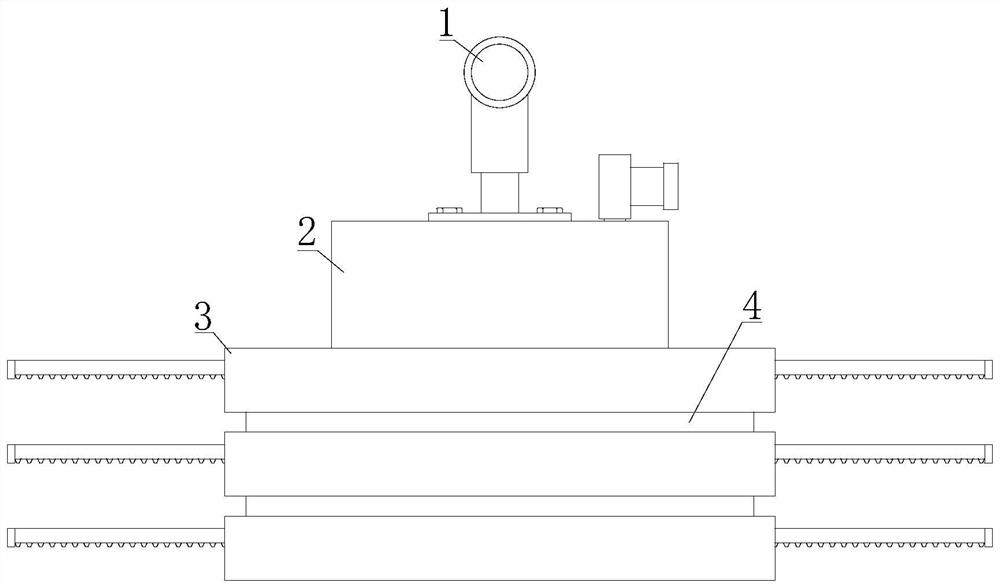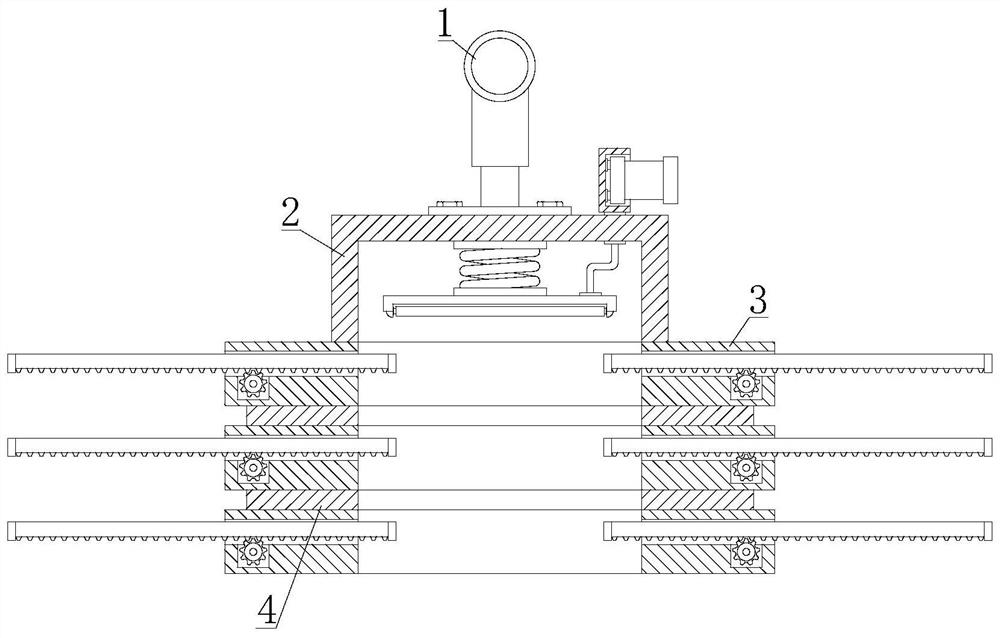Illumination compensation device for promoting rice tillering and implementation method of illumination compensation device
A light compensation and rice technology, applied in horticultural methods, botanical equipment and methods, horticulture, etc., can solve the problems of deviation, small number of rice ears, and small number of tillers of rice seedlings, etc.
- Summary
- Abstract
- Description
- Claims
- Application Information
AI Technical Summary
Problems solved by technology
Method used
Image
Examples
Embodiment approach
[0034] In order to better demonstrate the implementation process of the light compensation device for promoting rice tillering, this embodiment now proposes an implementation method for the light compensation device for promoting rice tillering, including the following steps:
[0035] Step 1: Install the angle adjustment assembly 1 on the bracket for fixing, and start the adjustment motor 103 to drive the adjustment shaft 101 to rotate slowly, so that the adjustment shaft 101 is adjusted under the joint action of the adjustment motor 103 and the torsion spring 106 The angle of the light compensation component 2;
[0036] Step 2: Install the power supply battery 28 in the external power supply base 27, so that the power supply battery 28 supplies power to the compensation lamp 25 through the external power supply base 27 and the elastic connecting wire 26;
[0037] Step 3: According to the actual light intensity outside, use the drive motor 38 to drive the drive gear 34 to rota...
PUM
 Login to View More
Login to View More Abstract
Description
Claims
Application Information
 Login to View More
Login to View More - R&D
- Intellectual Property
- Life Sciences
- Materials
- Tech Scout
- Unparalleled Data Quality
- Higher Quality Content
- 60% Fewer Hallucinations
Browse by: Latest US Patents, China's latest patents, Technical Efficacy Thesaurus, Application Domain, Technology Topic, Popular Technical Reports.
© 2025 PatSnap. All rights reserved.Legal|Privacy policy|Modern Slavery Act Transparency Statement|Sitemap|About US| Contact US: help@patsnap.com



